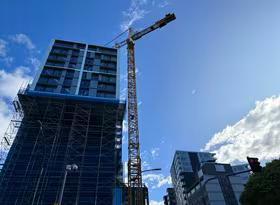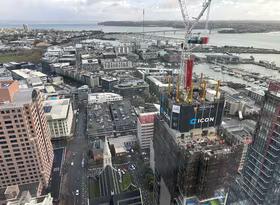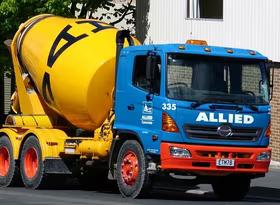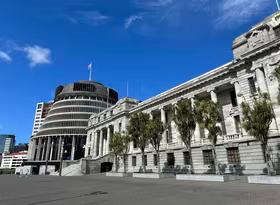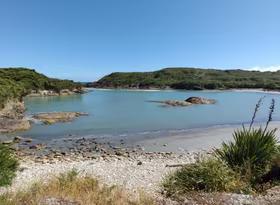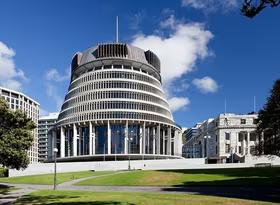KiwiBuild – otherwise known as “pulling numbers out of your arse”
Since Labour came into power late last year, its KiwiBuild policy has been shrouded in confusion by contradictory statements from government departments and within the government itself about exactly what the policy means for the construction sector. Phil Twyford, the Minister for Housing and Urban Development, has been adamant that “the overwhelming effect of the KiwiBuild plan will be to deliver new houses over and above what the private market is delivering.” He has been quick to downplay the possible crowding out of private sector work. Furthermore, the government had indicated that part of the policy was to buy some properties “off the plan”, yet Mr Twyford had seemingly contradicted this statement continually reiterated that KiwiBuild would result in an additional 10,000 dwellings being built per year over and above what the market would otherwise have delivered.
The Treasury’s release of documents relating to KiwiBuild last month, under the Official Information Act (OIA), has added some much-needed clarity to the likely outcomes of the policy. Graph 1 replicates a Treasury graph estimating the sequencing of the KiwiBuild programme and the contributions from various strands of activity between now and 2022, with a total of 29,000 dwellings completed during these four years. There are two key aspects of this graph to note.
- The pre-existing Crown building programme (presumably primarily via Housing NZ) already allowed for over 4,000 dwellings to be built during the year to June 2020. Indeed, work on redeveloping and reconfiguring Housing NZ’s portfolio has already seen the number of central government-backed dwelling consents more than double over the last year to reach a 29-year high of 1,454. Rolling up this pre-existing programme into KiwiBuild would account for almost half of the 29,000 dwellings completed in the four years to June 2022.
- “Off the plan” purchases account for about 22% of the 29,000 dwellings over the next four years. Both The Treasury and Mr Twyford have argued that these purchases increase building activity “because these developments would not otherwise have obtained financing”. We accept that government backing for these projects will provide greater certainty and is likely to accelerate the development process. But the assumption that the projects would not have gone ahead at all, and that finance is the limiting factor on construction activity, is questionable given the strength of demand for housing and the labour capacity constraints currently being experienced.
Graph 1

Remove these two components, and the net increase in construction over the next four years looks to be a little over 9,000 dwellings (out of a projected Crown programme of 29,000 dwellings). And that figure makes no allowance for the crowding out of private sector work by the increase in central government activity – something that we see as being a substantial risk in the near term.
It’s not only the net increase in the number of dwellings due to KiwiBuild that Mr Twyford is feeling the heat about. Other OIA documents released by the Ministry of Business, Innovation and Employment (MBIE) suggest that only 25,000 households renting from private landlords in Auckland would have sufficient income (estimated at $114,000pa) to purchase a KiwiBuild home. In other words, the government could potentially get only a 50% take-up of its “affordable” Auckland properties at $500,000-600,000 each.
Mr Twyford’s own guess of a household income of $60,000pa to get into a KiwiBuild home appears to be woefully short. Let’s assume that buyers of KiwiBuild homes will be able to obtain finance with a deposit of 10%, rather than the 20% requirement for most borrowers under the Reserve Bank’s current loan-to-value conditions. Then a single person with an income of $60,000pa could borrow $403,000 from the main banks,1 while a couple could obtain just $304,000. Using the banks’ calculators, and assuming a 10% deposit, suggests that a single person would need an income of $71,200pa to get into a $500,000 house, while a couple (with no children) would need a combined income of $88,400 to get into a $600,000 property.
In other words, the government risks bringing a large number of properties to the market for which there are few buyers who are realistically able to obtain or service the mortgage.
CoreLogic has also criticised the government’s assumption that it will be able to build its houses for about $2,000/sqm. Although this figure is broadly in line with the average per-square-metre (PSQM) cost of consents over the last year, it fails to take into account:
- regional building cost variations – construction costs are higher in Auckland than in other parts of the country
- design and architect fees and consent fees
- costs of site preparation, particularly if the land is not flat
- local council development contributions
- the cost of supplying essential services to the site
- the systemic under-recording of the value of work on consent applications to reduce fees
- the higher PSQM costs typically associated with attached and/or multi-storey dwellings
- the higher PSQM costs generally faced by smaller dwellings (see the last house at Is tiny living really so terrific? for an egregious example).
Although some of these costs are likely to be captured in the land price rather than the construction component of the final dwelling, the list of upside risks to the KiwiBuild costs highlights the potential that Labour will not be able to deliver on its targets once work gets underway.
In summary, the net effect of the government’s KiwiBuild policy could see as few as 9,200 additional properties added to the dwelling stock over the next four years, representing less than one-third of the programme that is pencilled in for that period. Additionally, this figure does not allow for any crowding out of private sector activity, which could reduce the net boost to total construction activity any further.
The government could also find that its definition of “affordable”, particularly in Auckland, is still not cheap enough to enable many renting households to get into their own home. Leaving aside questions about the ability of people to save a deposit, a first home of $500,000-600,000 requires a higher income than Phil Twyford has guessed.
Finally, there must be questions whether the government can deliver properties at the price points it has nominated. Any costs not properly allowed for will either make the properties even less affordable for first-home buyers or result in the government making a loss on its developments.
All in all, Labour’s KiwiBuild policy is looking like much less of a game-changer for the construction sector and housing affordability than the government has made it out to be. The policies aims might be admirable, but we think that solving Auckland’s housing crisis will prove to be a lot more complicated than Labour has thought.
1 Averaged across the online mortgage calculators provided by ANZ, ASB, Kiwibank, and Westpac. BNZ’s mortgage calculator does not have an option to run the calculations using average household expenses.









